One of the things we enjoyed visiting Romania was the opportunity to see, learn and experience some of the local Romanian traditions. Of course, I am sure there are many we also missed, as it challenging to understand the nuances of local culture from the perspective of a tourist. We did have a lot of fun and are looking forward to returning to Romania. 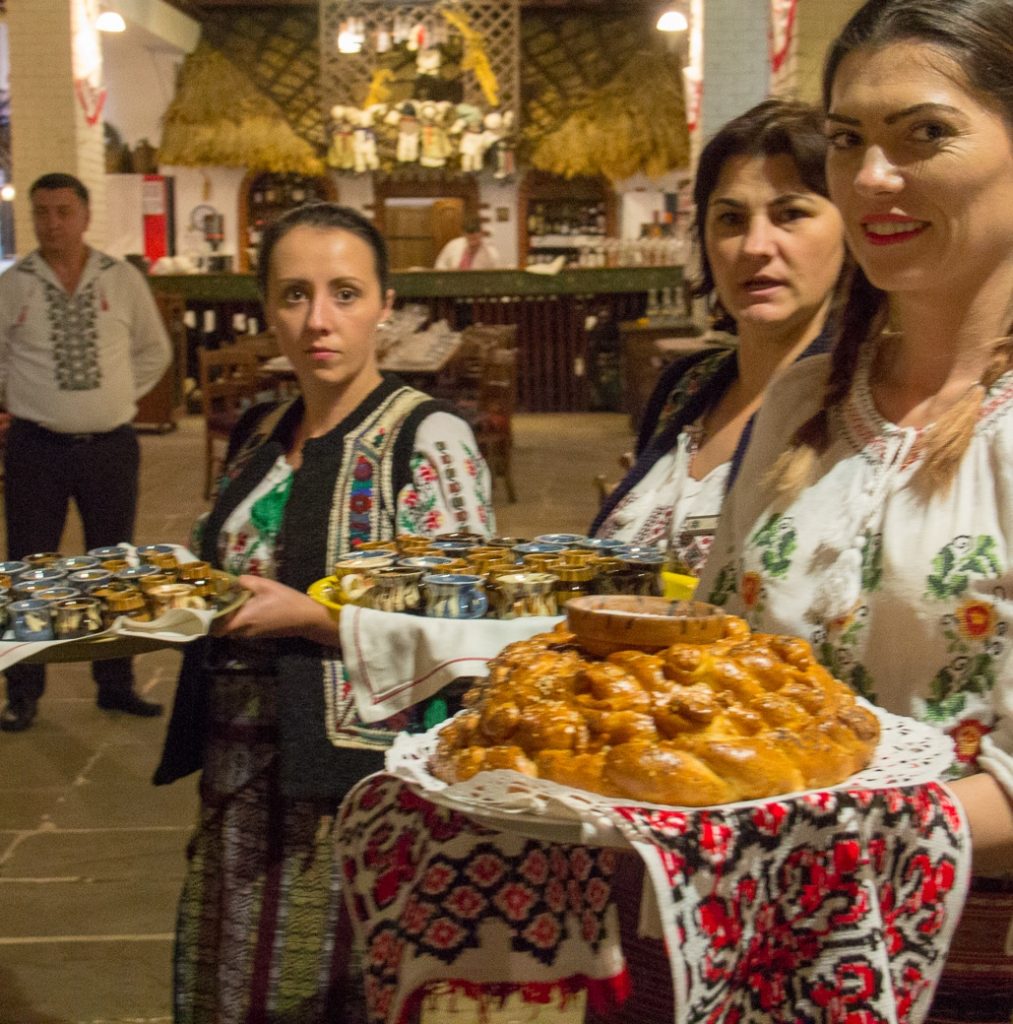
1. Traditional Greeting of Bread and Salt
The traditional greeting of bread and salt, a symbol of hospitality and welcome to guests at your home. Traditionally the bread, an ancient symbol for life, and the salt, a highly prized element, are symbols of welcome and hospitality. When offered, take a small piece of bread, and dip it in the salt, then eat. To refuse the welcome is considered rude. In this ritual, bread signifies food and salt is both flavor for food and a highly valued commodity signifying the importance of the guests to their home. For us as tourists this welcome was usually upon entering a restaurant and we were greeted by young women in traditional dress. In Romania, the bread and salt were usually accompanied by palinka, a traditional fruit brandy which many people make at home. 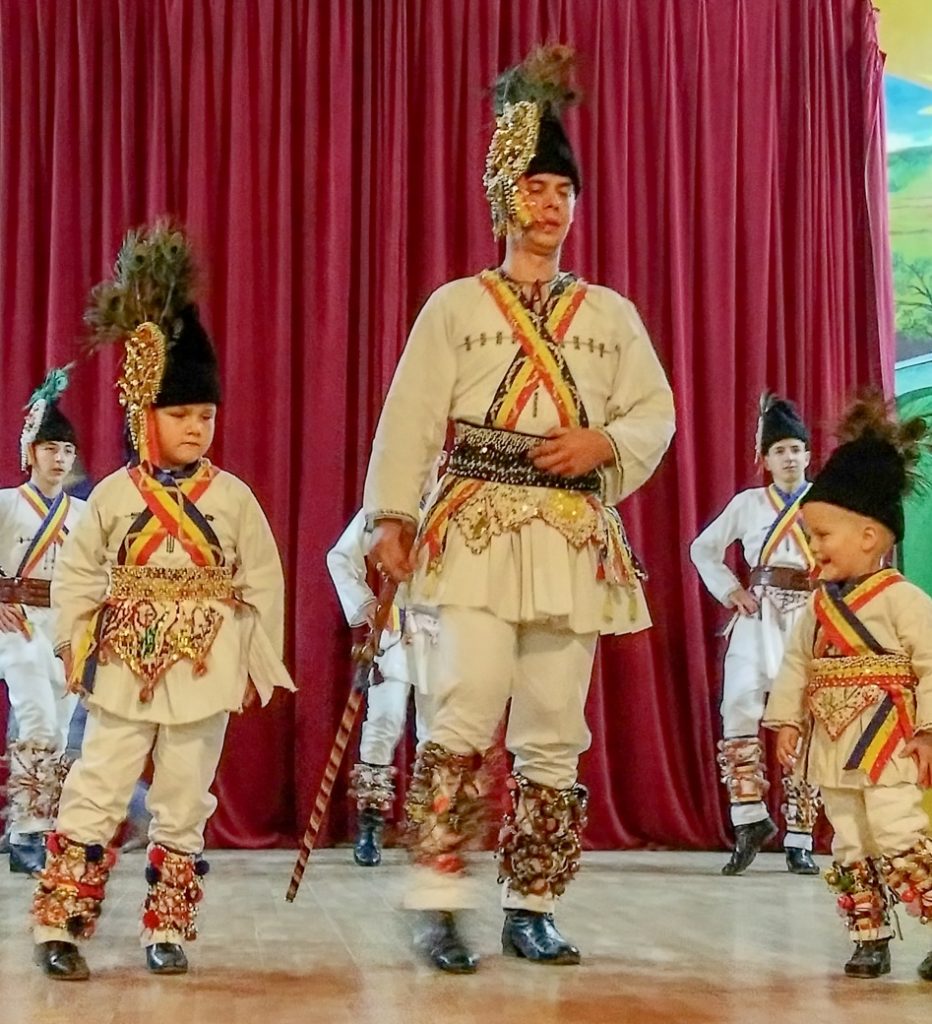
2. Traditional Dancing
It seems like everyone in Romania can dance! And music and dancing are a large part of visiting Romania. Think line dancing, barn dancing, square dancing, whatever the equivalent might be where you live. I did more dancing in two weeks in Romania than I had done in a long time. And, young people are very enthusiastic and confident about dancing. Many towns have local dance groups, teaching young people of all ages the traditional dances. Luckily by the time we attended the wedding we had a few evenings of dancing already. 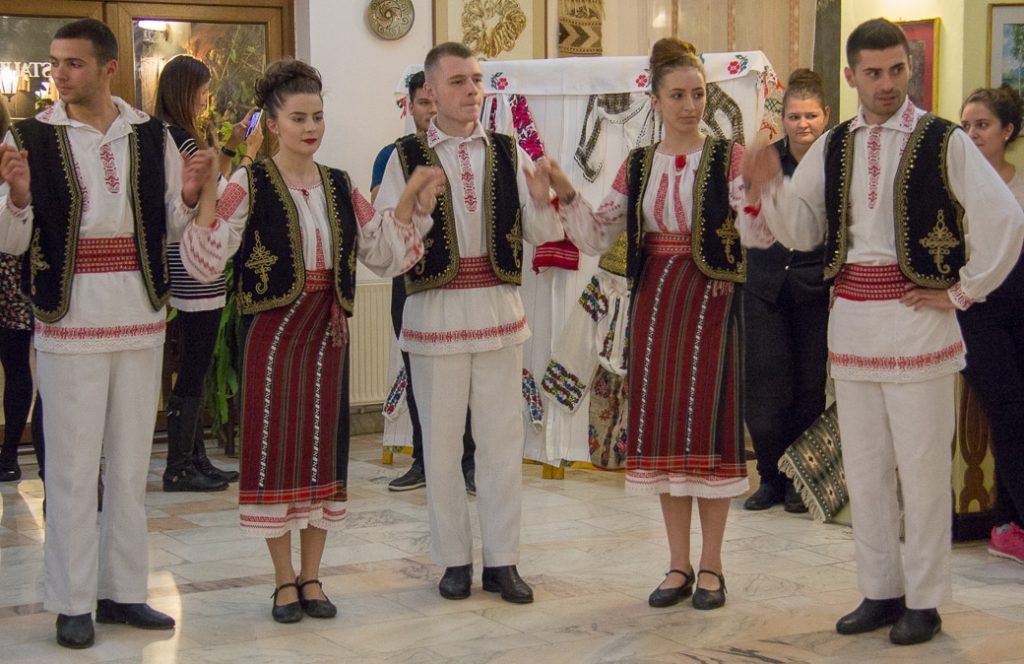
3. Traditional Wedding
We were fortunate enough to attend a traditional wedding in the village of Sibiel. The whole village participates in a local wedding and as attendees we also dressed in local attire. I should explain this is a tourist event, not an actual wedding. One of the first experimental touristic villages after the communist era, the village of Sibiel stages weddings for tourists. As part of the experience, you are treated just like a guest at the wedding, and the villagers participate just as they would for a real wedding. A traditional Romanian wedding begins with the godfather “picking up” the bride at her parent’s home. The godfather brings a gift for the parents and the unmarried women of the village are there to sing songs as the bride leaves her parent’s home. 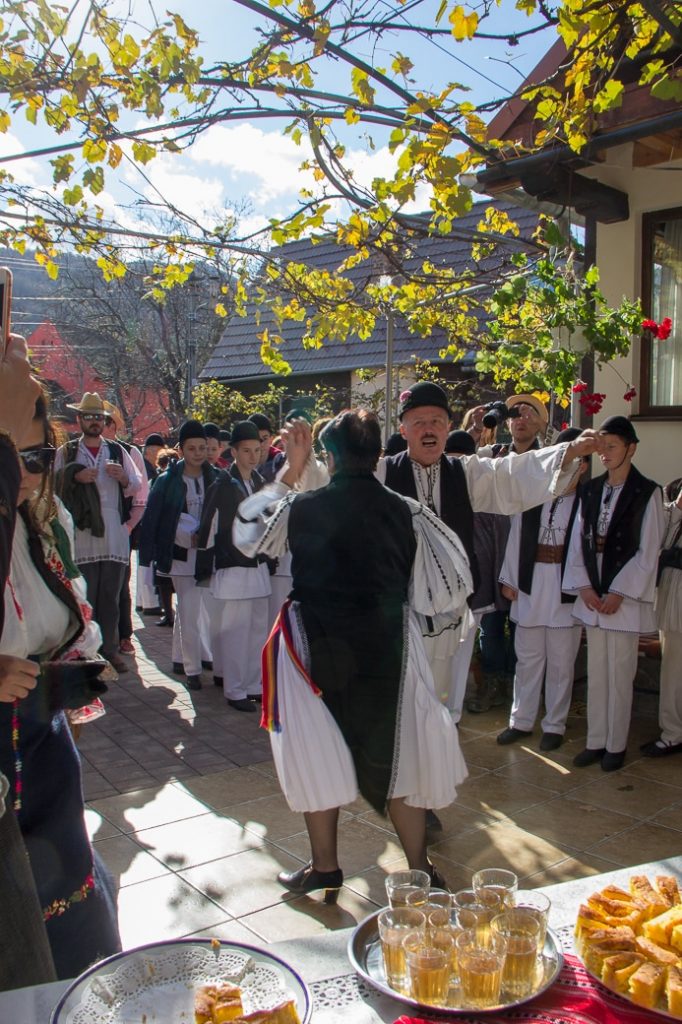 The boys of the village head to the groom’s house. Where the groom begins his journey from his parent’s house toward the bride’s parents house where they will meet briefly for the journey to the village’s ceremony hall for the wedding. The whole affair is accompanied by cakes, rachiu, (or palinka a traditional plum brandy) music and dancing. After the wedding, a huge feast and dancing takes place in the village hall. We had a ball at the wedding. The young people from the village were excellent hosts inviting us to dance and acting as our dance instructors. Watch the video in this article for a clip of the wedding.
The boys of the village head to the groom’s house. Where the groom begins his journey from his parent’s house toward the bride’s parents house where they will meet briefly for the journey to the village’s ceremony hall for the wedding. The whole affair is accompanied by cakes, rachiu, (or palinka a traditional plum brandy) music and dancing. After the wedding, a huge feast and dancing takes place in the village hall. We had a ball at the wedding. The young people from the village were excellent hosts inviting us to dance and acting as our dance instructors. Watch the video in this article for a clip of the wedding. 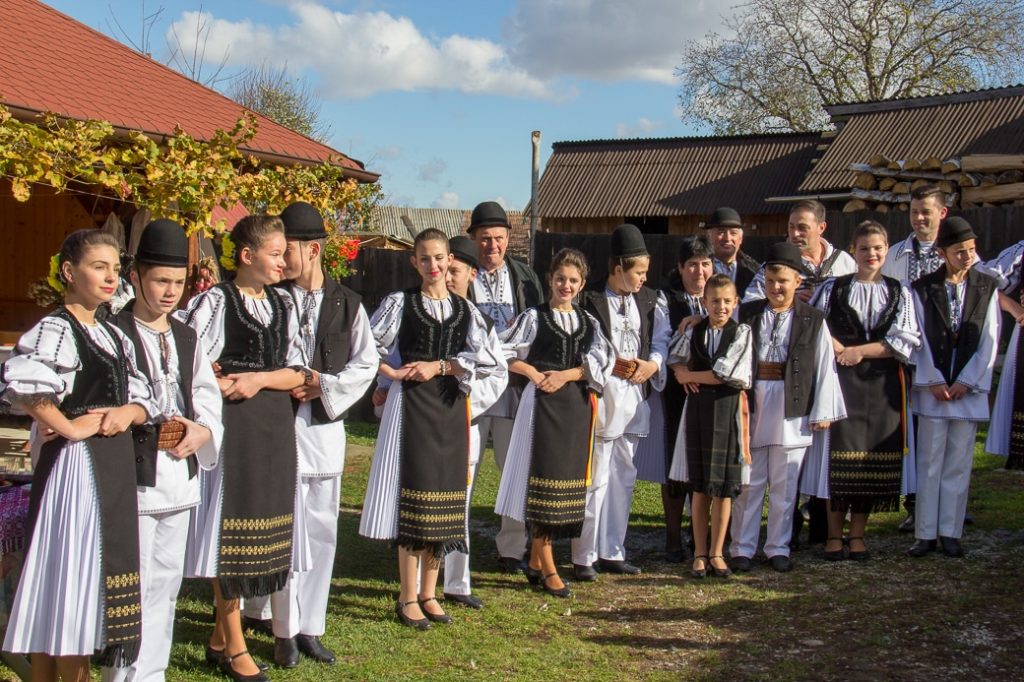 The village of Sibiel also has the biggest glass-painted icon museums in the Transylvanian region, with religious icons painted on glass, a very old Romanian tradition.
The village of Sibiel also has the biggest glass-painted icon museums in the Transylvanian region, with religious icons painted on glass, a very old Romanian tradition. 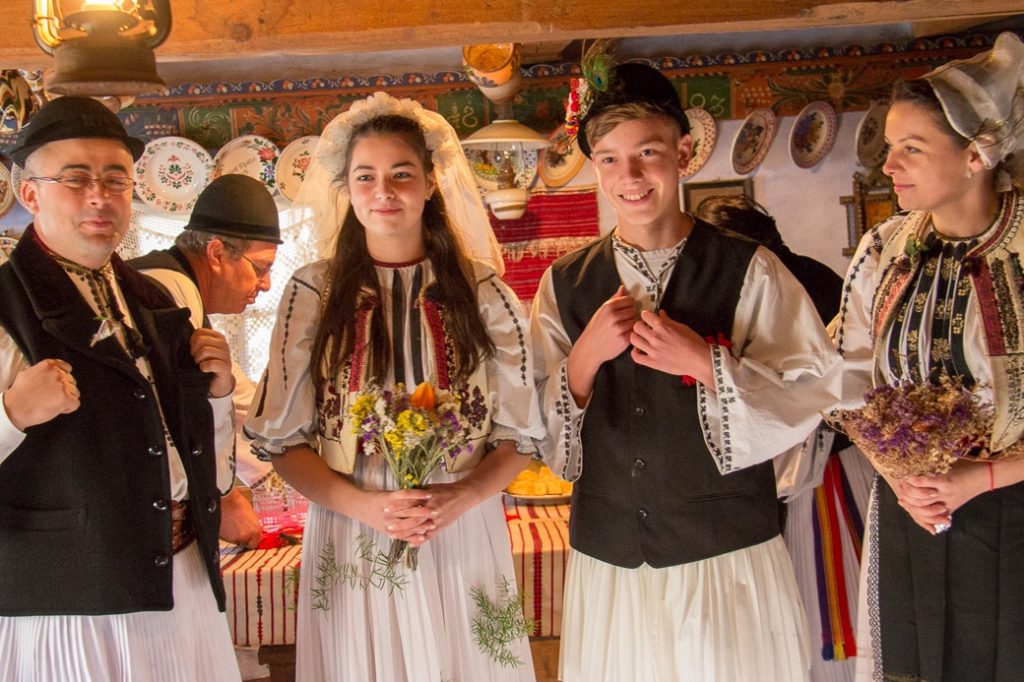
4. Traditional Dress
Colors, materials, and patterns used for traditional dress vary based on where you live in Romania. It was not uncommon to see people wearing traditional dress in the countryside. We also saw people in traditional dress in Bucharest, but it seemed more for a special occasion or celebration. As you can see from some of these photos, traditional clothing varies widely. 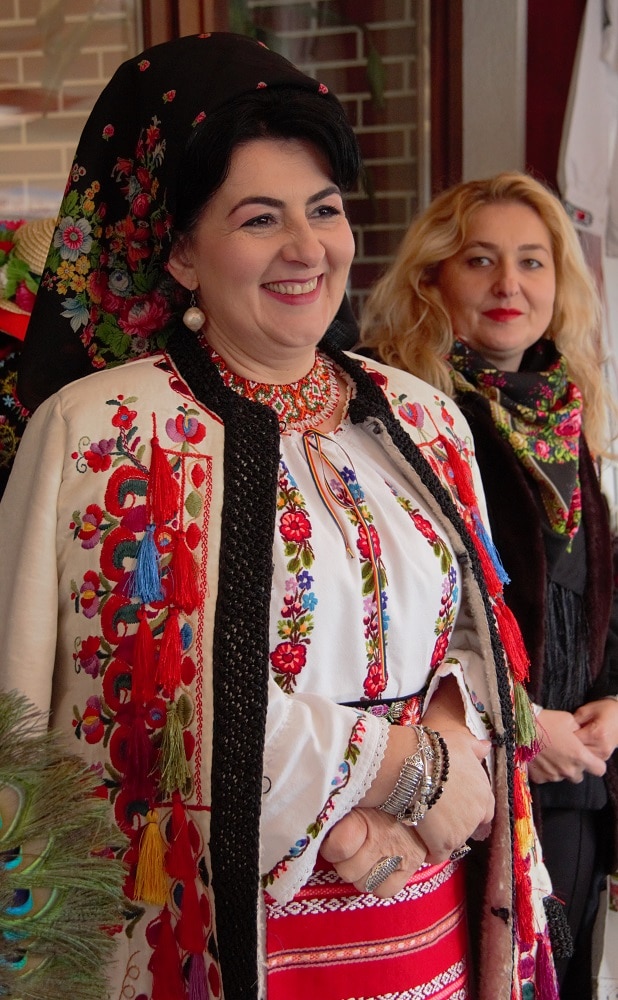
5. Embroidery
The textiles of Romania feature embroidery. Some of it is very ornate and delicate. Patterns, colors and materials denote where you are from in Romania. So, Romanians can tell where they live by the clothes you are wearing. The patterns tell a story and are symbols from the local area. Many are passed down from generation to generation. Many of the same patterns are found in the pottery and painted eggs (see below). The beautiful jacket pictured here took the owner several months to make. 
6. Bead Work
Much like the intricate embroidery work on clothing and household items, intricate beadwork is another traditional Romanian handcraft. You can find and purchase intricate handmade beaded jewelry and belts at a fraction of the cost we have seen elsewhere in the world. Some of the patterns of the beadwork are the same as those found on clothing, pottery, painted eggs and even traditional homes. 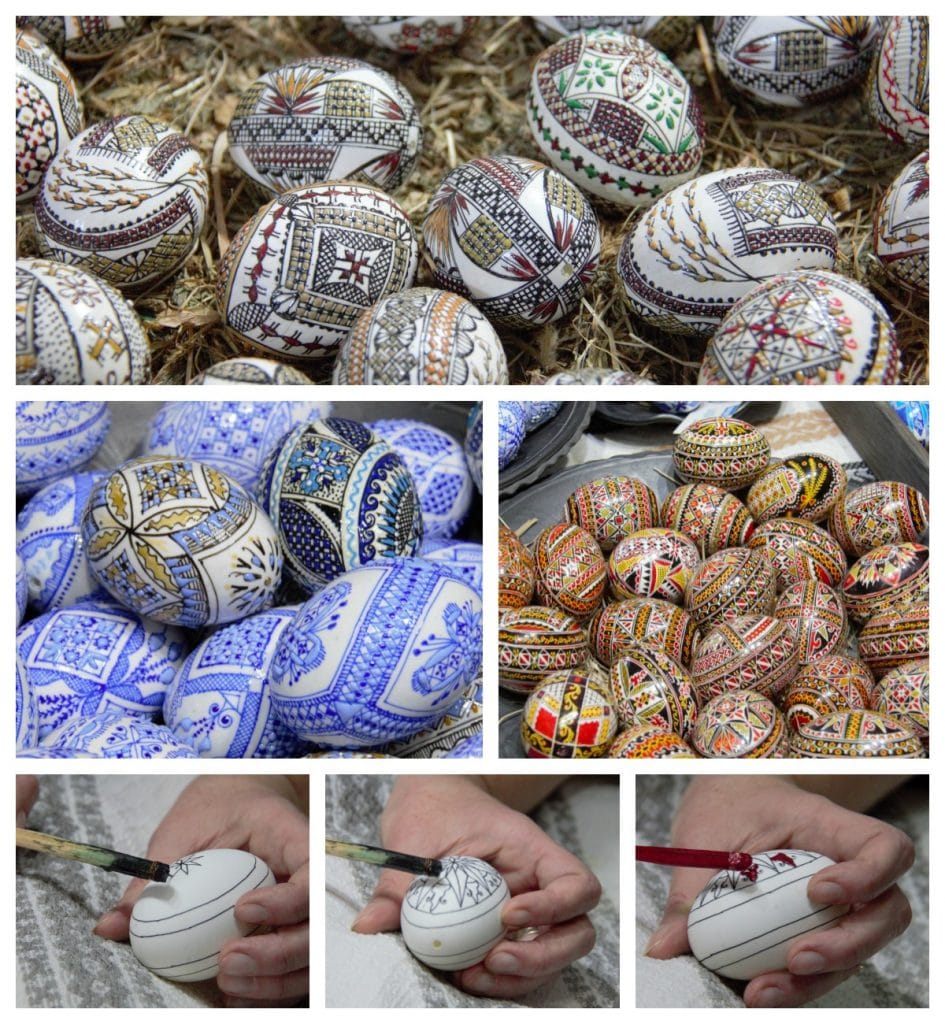
PLANNING AN UPCOMING
DINNER PARTY?
Get a FREE copy of the ITALIAN
DINNER PARTY MENU, complete with recipes!
7. Painted Eggs
Intricately painted eggs are a tradition in Eastern Europe including in Romania. We went to two museums featuring painted eggs, one in Vama and one in Ciocanesti, the town mentioned below regarding the painted houses. (Both in the Bukovina region). The museum in Vama houses a large collection of painted and decorated eggs from around the world. And, not just chicken eggs but also ostrich, goose, emu, quail and any other type of eggs you can name. The painted eggs are real eggs, emptied and then painted. The tradition began at Easter decorating eggs. (And I am sure this is where the rest of the world has adapted this tradition from without even knowing its origins.) The colors have meaning- red symbolizing love, black eternity, green is nature, yellow is youth and agriculture, blue is health. The cross and the star are traditional motifs. The design is “painted” on with beeswax. Watching the woman create the pattern is amazing as to how steady her hand is and how quickly she works. The pattern is done free hand, it is not drawn on the egg first. Eggs are available for purchase and they are less delicate than they look. You can transport one home without breaking it. 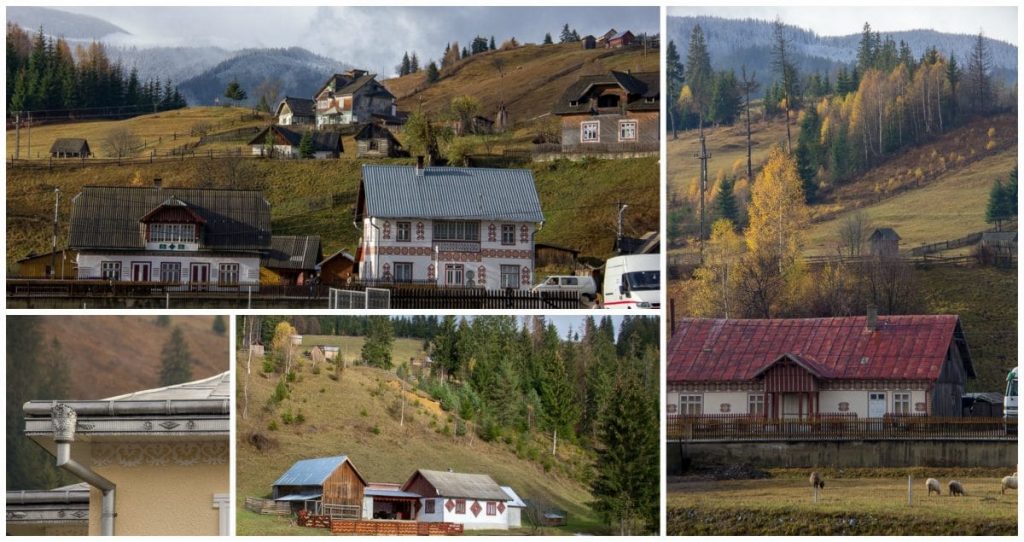
8. Traditional Homes
Ciocanesti is small, picturesque town known for its painted houses. It has won awards in 2014 and 2016 as best Cultural Town in Romania. It has even made Lonely Planets’ 10 Most Colorful Towns in Europe List. The homes must be painted in traditional colors and motifs. And yes, these are the same motifs you see on the eggs, textiles and pottery from the area. The town is good for a wander around and taking photos. Each house has its own patterns. Even the drain pipes are works of art! There is also a small, ethnographic museum where you can see the beautiful painted eggs from this village and for which the Bukovina region is known. And while Ciocănești is known for its painted houses, throughout Romania the houses are worth taking a look. As you drive through the countryside the architecture and colors changes. Some are two stories, with room for animals and hay storage below the family home. Some have wells in their front yards, some have haystacks in the yard, some have porches, others do not. Some are more alpine looking, some even have a-frame style roofs. I encourage you to notice the architecture of the homes as you travel through the countryside. We found it fascinating. 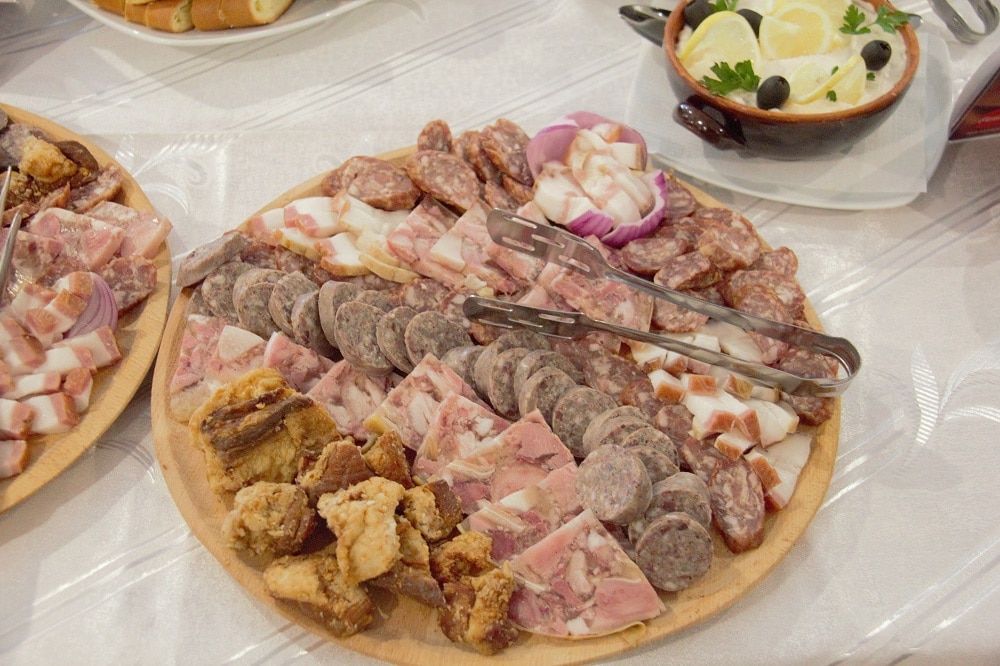
9. Traditional Food
Romanians eat a lot of meat and drink a lot of wine. Large gatherings with lots of food and wine are common. Food is a social occasion. And while you can find restaurants that serve non-Romanian food, especially in Bucharest a visit to a traditional restaurant, complete with music and dancing is a great opportunity. In 2019, Sibiu, one of the European Regions of Gastronomy, will be celebrating local foods of the region. Festivals, markets, with many local producers and restaurants will be part of the celebration. Popular traditional Romanian cuisine includes: polenta, Transylvanian goulash, veal and pork are common, cabbage, duck, and pork knuckle are also common on menus and eaten in homes. In Bucharest, check our list of where to try Romanian wine and find traditional Romanian food, and there are several suggestions for food tours to understand the stories behind the food. We traveled through Romania as part of #ExperienceRomania, a tour organized for members of the media by a group of passionate volunteers working to increase awareness of Romania and promote tourism in the country.


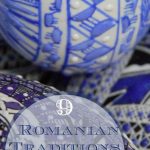
Leave a Reply